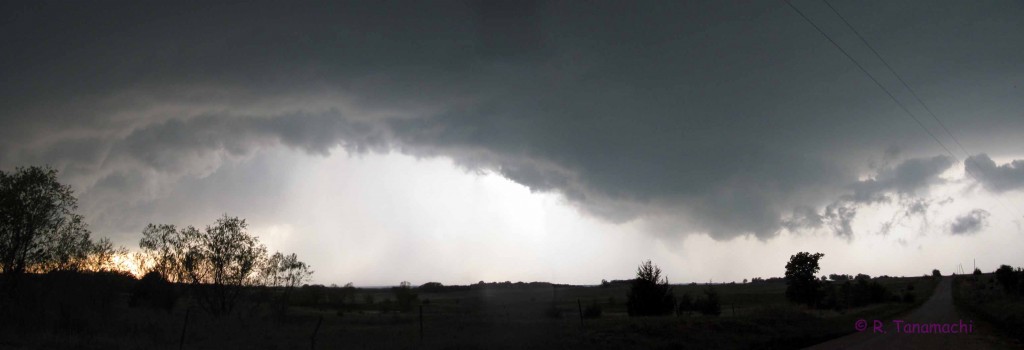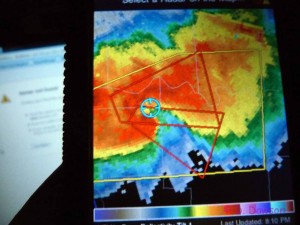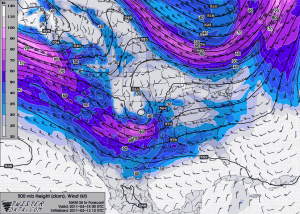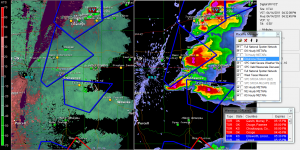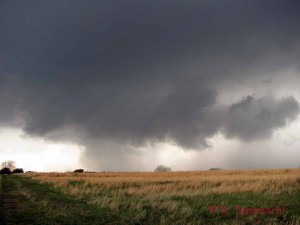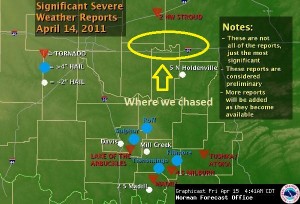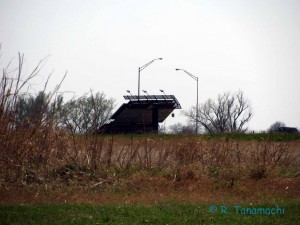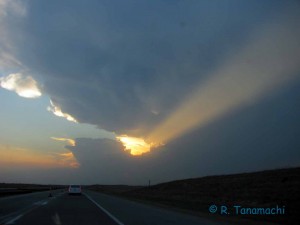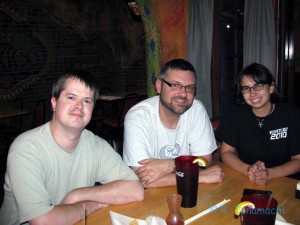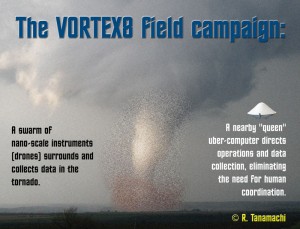27 April 2011 is the type of day no storm chaser wants to see. The damage surveys are still ongoing, and the death toll continues to climb every time I refresh major news sites. As of this writing, the death toll associated with 27 April 2011 (337) has topped the Super Outbreak of April 3-4, 1974 (319).
I can’t claim any ownership of the events. I didn’t chase this outbreak, nor did I chase any of the antecedent storms that grazed Texas, Arkansas, and Louisiana during the prior three days. (Admittedly, I made it as far as Ardmore on Sunday afternoon, before turning around when the first tornadic supercell near Abeliene, TX didn’t hold together, deciding to leave that event to Amos M. and the other chasers already there.) Even if I could have made it to the target area, I think the chase would have been exceptionally challenging (terrain, trees, debris blocking roads, poor visiblity, etc). I also might have run the risk of becoming a victim and requiring assistance that would otherwise be given to local survivors – a position I hope I never come to find myself in.
I was certainly aware of the high risk convective outlook from SPC as I went about my business on Wednesday. Around 4:30 p.m. CDT, my husband materialized in my office and told me a tornado was bearing down on Tuscaloosa, AL, and that Lou W. was watching a live tower cam stream in his office. I arrived to find that a small crowd had gathered, and a powerful tornado was squarely in the tower cam’s sights on ABC 33/40 on UStream.
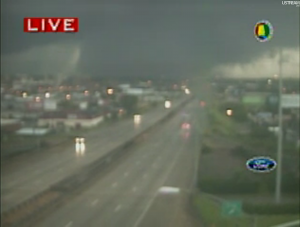
It’s one thing to watch a tornado dance and dart over open prairies, perhaps shredding a shed or a fence or toppling a few power poles along the way. It’s quite another to watch a fat barber pole churn through a populated area, know that it is killing people, and understand that, even with years of knowledge and experience, there is absolutely nothing you can do about it. I felt physically nauseated, and utterly helpless. In those moments, I literally hated being a meteorologist. Why did this happen? There is no easy answer. The winds blow when and where they may. All we can do is read the signs beforehand, and try, with renewed focus, to learn the lessons that the atmosphere is teaching us.
To start that process, I’ll posit two observations I made during and immediately after the event. The first was that footage of the the Tuscaloosa tornado bore a striking resemblance to Earle Evan’s footage of the Andover, Kansas tornado of 26 April 1991 (a staple of the Tornado Video Classics series that I and many other storm geeks grew up on). The condensation funnel itself appears gray, while darker, diagonal vortices whirl around the base, like a diabolical parody of a barber pole. I was not the only one who noticed the Andover-esque appearance of the Tuscaloosa tornado; when I posted that comment on Facebook, I was rewarded with a resounding chorus of “I was just thinking that!”) I’ll venture that, while striking, the resemblance is coincidental, and while it may indicate that the two tornadoes share some similar characteristics (such as width, moisture content, debris content, and swirl ratio), the resemblance itself doesn’t have a great deal of scientific significance.
My other observation has to do with the SPC preliminary storm reports from April 27. There’s a noticeable dearth of other-than-tornado reports across Mississippi and Alabama, compared to surrounding areas. The tornadic supercells that raked across Mississippi and Alabama must have also produced hail and damaging wind gusts, so where were all the reports? When I pointed this pattern out to some of my colleagues, speculating that spotters were opting to report tornadoes rather than hail or high winds, the response from my colleagues within the NWS was overwhelmingly in the affirmative. The SPC preliminary reports are aggregated from Local Storm Reports (LSRs) compiled by local NWS offices, and NWS doesn’t censor any of the reports coming in (except for the obvious hoax reports). So the bias towards tornado reports in that area arises from the spotters’ individual choices. If you’re watching a tornado while 2″ hail is falling around you, what are you going to report? The hail, or the tornado? Ideally, you’d want to report both, but you can’t report both at the same time. I know that I’d opt to report the tornado first, and the hail second.
We still have much to learn from this outbreak, but more urgently, the survivors of these storms need help. The storm outbreak itself lasted four days (25 – 28 April 2011) and impacted areas ranging from central Texas to Washington, D.C. In my judgment, the most effective way to extend a helping hand from a distance is to donate to charitable organizations such as the Red Cross. You can also text “tornado” to 50555 to give $10 to United Way of Alabama. Of course, money isn’t the only resource needed; I’ve got an appointment on Monday with the local blood bank.
